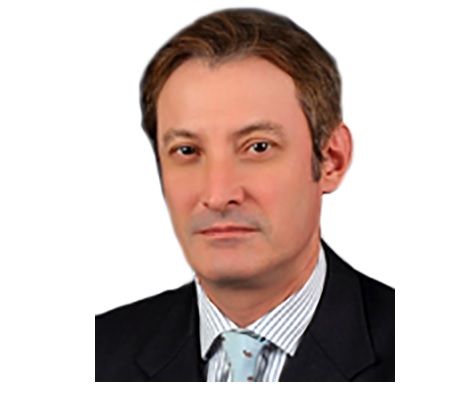ONCE UPON A time, not long after the collapse of Lehman Brothers in 2008, there emerged a group of market players best described as opportunists who thought they could game the Asian credit market. Few of the firms they set up have survived, but you can’t blame them for having tried.
For anyone who needs a refresher, bid/offer spreads on emerging market and high-yield debt had expanded to their highest in modern history. Spreads of 5-8 cash points were the norm on Asian high-yield, and liquidity had dried up, with stressed banks and other long players facing margin calls who were desperate to shift paper into a market that wasn’t there.
Why not get in the middle of this spread and match client buyer with client seller, so the thinking went. Enter stage left the likes of Amias Berman, a Hong Kong-headquartered “independent broker”, as these firms liked to call themselves, in this case one set up by former Salomon Brothers superstars Jeremy Amias and Charlie Berman. Then Newedge arrived in Singapore. Cantor Fitzgerald also had a stab at this line.
Six or seven similar outfits emerged from the ether of profound market illiquidity in London. None survive, at least not in their original form. What happened was that market liquidity normalised, and banks recovered far faster than expected. By the second half of 2009, banks were back making markets with their balance sheets, particularly in Asia, and in the process bid/offer spreads came in to a more regular half to a point.
In order to survive this normalisation you needed to have enough balance sheet to be able to warehouse positions. And to keep the clients sweet and willing to make a call to you first, rather than return to their bulge-bracket banks, you needed to have a decent research capability to add niche value.
In order to survive this normalisation you needed to have enough balance sheet to be able to warehouse positions
ONE PLAYER THAT did survive and has remained rather resolutely low key since its inception in 2009 is SC Lowy, whose founding partner Michel Lowy, a former Deutsche Bank distressed debt banker, claims that the firm has cornered around 30% of the loan trading market in Asia in terms of turnover.*
I recall meeting the congenial Monsieur Lowy almost a decade ago in a previous incarnation as IFR loans editor when he pitched a Deutsche deal for our high-yield loan of the year award. I seem also to remember that when he quit Deutsche with his cohort Soo Cheon Lee to establish the firm, there were a large number of brickbats circulating that the project was doomed to fail. That turned out to be the right call for the high-yield independent broker model. But it didn’t apply in SC Lowy’s case, something which I find rather intriguing.
It seems the firm possessed the balance sheet to warehouse large positions and invested sufficiently in research to be able to stand out with considered opinions on credit. A considerable part of the firm’s flow is also centred on distressed debt, with its analysts making calls as to the likely value of debt in an orderly restructuring, taking into account capital structure and the appropriate discount rate to use.
What’s in a name? Maybe a lot. The “independent broker” bit the dust but SC Lowy refers to itself as an independent fixed income specialist. Nothing wrong with that. The model is similar to that employed by the DCM departments of the bulge-bracket firms: secondary trading underpinned by primary market capability. And in SC Lowy’s case, advisory work which would normally be the provenance of expert restructuring firms.
I IMAGINE NEITHER Lowy nor Lee envisaged that they would get involved in the primary side of the business when they jumped on the independent broker bandwagon six years ago. But they managed to close out a US$125m high-yield deal for Hong Kong-based China real estate firm Redco in July.
Not bad for a greenhorn company which was supposed to fail like the rest of its peers. And, harking back to the founders’ backgrounds, the firm took on a US$100m distressed debt portfolio in 2012 to actively manage the fund on behalf of investors.
From a modest start in Hong Kong, the firm now has offices in London, New York, Seoul and Sydney. The distressed debt game is not so much geographically based, according to Lowy, as it is sector specific, with the bulk of the paper doing the rounds coming from cyclically challenged industries. At the moment it’s shipping and mining, both of which have suffered from massive over-investment and the cooling of the commodities bid from China.
Is this emerging upstart about to give bankers at the bulge-bracket firms sleepless nights? I doubt it somehow. The key to Lowy’s fairy tale success, apart from those enumerated above, is in economy of scale. Or rather the advantage of scale.
A cast-of-thousand sales operation can wreak havoc when traders’ high-yield axes become widely known and some spivvy salesperson tries to extract the maximum amount of meat from the position. I remember that from years ago when I worked at a Japanese bank in London in bond sales.
Some cheeky chappy thought he could extract a cool US$250,000 from a supranational client from a relatively modest US$3m trade. Unfortunately the client knew where the market was and never spoke to him or the bank again. And in case you are minded to ask: no, that cheeky chappy was not your honourable columnist.
(This article has been updated to correct a reference to market share in sixth paragraph.)
